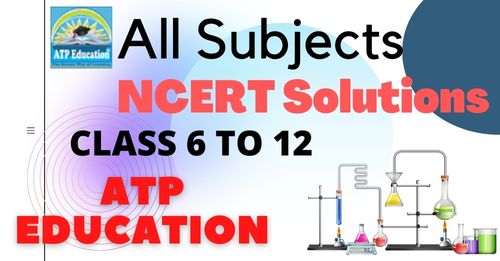1. Matter In Our Surroundings Science Class 9 In English Medium Ncert Book Solutions Additional -Questions 2
1. Matter in Our Surroundings : Additional -Questions 2 Science class 9th:English Medium NCERT Book Solutions
NCERT Books Subjects for class 9th Hindi Medium
Chapter 1. Matter in Our Surroundings Additional -Questions 2: NCERT Book Solutions for class 9th. All solutions and extra or additional solved questions for 1. Matter in Our Surroundings : Additional -Questions 2 Science class 9th:English Medium NCERT Book Solutions.. All ncert books and cbse syllabus are solved chapter by chapter and also exercise within chapter and exercise solved by our expert in Hindi and English Medium for studends.
NCERT books solved questions and answers 1. Matter in Our Surroundings, 1. Matter in Our Surroundings solved questions and answers, 1. Matter in Our Surroundings in english Medium, NCERT Book Solutions for 9 Science, chapter and excercise for Science-Additional -Questions 2, NCERT Book Solutions for class 9th, Science, Science class 9th, class 9th Science, All solutions and extra or additional solved questions for 1. Matter in Our Surroundings, Science 1. Matter in Our Surroundings, Additional -Questions 2, Science class 9th, English Medium NCERT Book Solutions
1. Matter in Our Surroundings
Additional -Questions 2
Questions-Answers (page 6) NCERT BOOK
Q1. The mass per unit volume of a substance is called density.
(density = mass/volume).
Arrange the following in order of increasing density –
air, exhaust from chimneys, honey, water, chalk, cotton and iron.
Q2. (a) Tabulate the differences in the characterisitcs of states of matter.
(b) Comment upon the following: rigidity, compressibility, fluidity, filling a gas container, shape, kinetic energy and density.
Q3. Give reasons
(a) A gas fills completely the vessel in which it is kept.
(b) A gas exerts pressure on the walls of the container.
(c) A wooden table should be called a solid.
(d) We can easily move our hand in air but to do the same through a solid block of wood we need a karate expert.
Q4. Liquids generally have lower density as compared to solids. But you must have observed that ice floats on water. Find out why?
Questions-Answers (page 9) NCERT BOOK
Q1. Convert the following temperature to celsius scale:
a. 300 K b. 573 K.
Q2. What is the physical state of water at:
a. 250ºC b. 100ºC
Q3. For any substance, why does the temperature remain constant during the change of state?
Q4. Suggest a method to liquefy atmospheric gases.
Questions-Answers (page 10) NCERT BOOK
Q1. Why does a desert cooler cool better on a hot dry day?
Q2. How does the water kept in an earthen pot (matka) become cool during summer?
Q3. Why does our palm feel cold when we put some acetone or petrol or perfume on it?
Q4. Why are we able to sip hot tea or milk faster from a saucer rather than a cup?
Q5. What type of clothes should we wear in summer?
Exercise:
Q1. Convert the following temperatures to the Celsius scale.
(a) 300 K (b) 573 K.
Q2. Convert the following temperatures to the Kelvin scale.
(a) 25°C (b) 373°C.
Q3. Give reason for the following observations.
(a) Naphthalene balls disappear with time without leaving any solid.
(b) We can get the smell of perfume sitting several metres away.
Q4. Arrange the following substances in increasing order of forces of attraction between the particles— water, sugar, oxygen.
Q5. What is the physical state of water at—
(a) 25°C (b) 0°C (c) 100°C ?
Q6. Give two reasons to justify—
(a) water at room temperature is a liquid.
(b) an iron almirah is a solid at room temperature.
Q7. Why is ice at 273 K more effective in cooling than water at the same temperature?
Q8. What produces more severe burns, boiling water or steam?
Q9. Name A,B,C,D,E and F in the following diagram showing change in its state
ATP Educationwww.atpeducation.com ATP Education www.atpeducation.com
ATP Education
See other sub-topics of this chapter:
1. Chapter Review class 9 Chap-1. Matter in Our Surroundings
2. Questions-Answers class 9 Chap-1. Matter in Our Surroundings
3. Additional -Questions class 9 Chap-1. Matter in Our Surroundings
4. Additional -Questions 2 class 9 Chap-1. Matter in Our Surroundings
Advertisement
NCERT Solutions
Select Class for NCERT Books Solutions
Notes And NCERT Solutions
Our NCERT Solution and CBSE Notes are prepared for Term 1 and Terms 2 exams also Board exam Preparation.
Science Chapter List
1. Matter in Our Surroundings
2. Is Matter around us Pure
3. Atoms and Molecules
4. Structure of The Atom
5. The Fundamental Unit of Life
6. Tissues
7. Diversity in Living Organisms
8. Motion
9. Force and Laws of Motion
10. Gravitation
11. Work and Energy
12. Sound
13. Why Do We Fall ill
14. Natural Resources
15. Improvement in Food Resources


